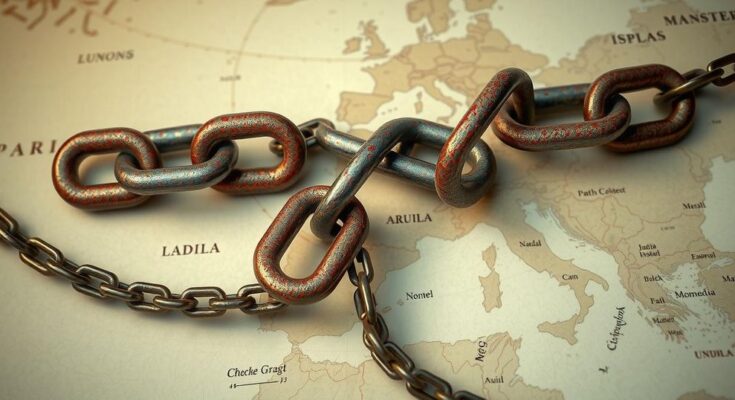Russia and Iran’s historical rivalry has transformed into a strategic alliance with current interactions centering on a comprehensive partnership agreement. The nations have cooperated in military and economic ventures, particularly during the Syrian Civil War and in the context of nuclear development. However, lingering mistrust and a complex historical backdrop suggest challenges ahead for this partnership.
Russia and Iran maintain a complex relationship characterized by historical rivalries juxtaposed with their current alliance. Recent developments highlight a strategic partnership forged through diplomatic gestures, including meetings between President Vladimir Putin and Iranian President Masoud Pezeshkian. Their collaboration encompasses military, economic, and cultural dimensions, aimed at fortifying ties amid international pressures, particularly from the United States.
Historically, Russia and Iran have experienced conflict, with wars in the 18th and 19th centuries leading to territorial losses for Iran. The early 20th century saw Russian occupations, and during World War II, both the Soviet Union and Britain invaded Iran, leaving lasting scars. Despite these tensions, relations began to thaw after the Soviet Union’s dissolution, with Russia emerging as a key trade and military ally for Iran, especially amidst international sanctions.
In recent years, Russia’s involvement in Iran’s nuclear program further solidified cooperation, leading to the construction of Iran’s first nuclear power plant. Both nations also aligned against common adversaries during the Syrian Civil War, supporting Bashar Assad’s regime amid a shared distrust of Western influence. The partnership strengthened, particularly as both countries faced challenges from Western powers.
Nonetheless, controversies arise regarding the depth of their alliance. Allegations of arms deals and military cooperation surfaced, with claims of drone transfers and ballistic missile support. Political backing is mutual, with Iranian leaders echoing Putin’s narratives in international conflicts. However, underlying mistrust persists among the Iranian populace toward Russia’s historical actions and intentions.
The history of Russia-Iran relations is marked by fluctuations between animosity and cooperation. After centuries of rivalry, both nations have found common ground in modern geopolitical dynamics, particularly as they navigate the complex landscape shaped by U.S. foreign policy and regional conflicts. The historical context is crucial in understanding the current strategic partnership, which seeks to enhance economic and military cooperation while also addressing mutual threats from external forces.
In summary, although Russia and Iran have managed to forge a strategic alliance that strengthens their cooperation in various sectors, their relationship remains complicated by a tumultuous history. While they present a united front against Western pressures, deep-seated suspicions, historical grievances, and competing interests continue to challenge the durability of their partnership. The evolving geopolitical landscape will further test the limits of their alliance.
Original Source: apnews.com




